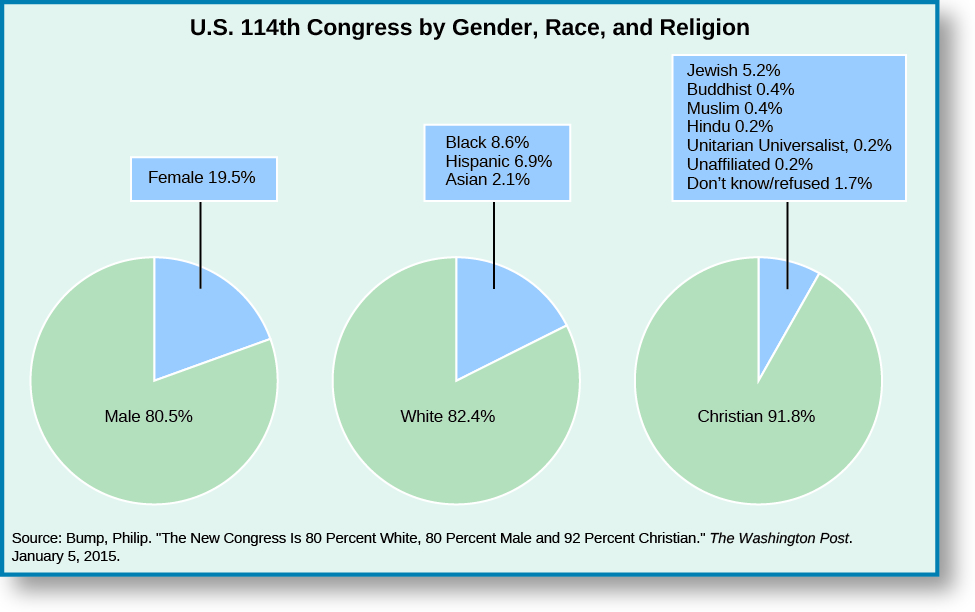| << Chapter < Page | Chapter >> Page > |

Ethnic, racial, gender, or ideological identity aside, it is a representative’s actions in Congress that ultimately reflect his or her understanding of representation. Congress members’ most important function as lawmakers is writing, supporting, and passing bills. And as representatives of their constituents, they are charged with addressing those constituents’ interests. Historically, this job has included what some have affectionately called “bringing home the bacon” but what many (usually those outside the district in question) call pork-barrel politics . As a term and a practice, pork-barrel politics—federal spending on projects designed to benefit a particular district or set of constituents—has been around since the nineteenth century, when barrels of salt pork were both a sign of wealth and a system of reward. While pork-barrel politics are often deplored during election campaigns, and earmarks—funds appropriated for specific projects—are no longer permitted in Congress (see feature box below), legislative control of local appropriations nevertheless still exists. In more formal language, allocation , or the influencing of the national budget in ways that help the district or state, can mean securing funds for a specific district’s project like an airport, or getting tax breaks for certain types of agriculture or manufacturing.
The language and metaphors of war and violence are common in politics. Candidates routinely “smell blood in the water,” “battle for delegates,” go “head-to-head,” “cripple” their opponent, and “make heads roll.” But references to actual violence aren’t the only metaphorical devices commonly used in politics. Another is mentions of food. Powerful speakers frequently “throw red meat to the crowds;” careful politicians prefer to stick to “meat-and-potato issues;” and representatives are frequently encouraged by their constituents to “bring home the bacon.” And the way members of Congress typically “bring home the bacon” is often described with another agricultural metaphor, the “earmark.”
In ranching, an earmark is a small cut on the ear of a cow or other animal to denote ownership. Similarly, in Congress, an earmark is a mark in a bill that directs some of the bill’s funds to be spent on specific projects or for specific tax exemptions. Since the 1980s, the earmark has become a common vehicle for sending money to various projects around the country. Many a road, hospital, and airport can trace its origins back to a few skillfully drafted earmarks.
Relatively few people outside Congress had ever heard of the term before the 2008 presidential election, when Republican nominee Senator John McCain touted his career-long refusal to use the earmark as a testament to his commitment to reforming spending habits in Washington.
In 2011, after Republicans took over the House, they outlawed earmarks. But with deadlocks and stalemates becoming more common, some quiet voices have begun asking for a return to the practice. They argue that Congress works because representatives can satisfy their responsibilities to their constituents by making deals. The earmarks are those deals. By taking them away, Congress has hampered its own ability to “bring home the bacon.”
Are earmarks a vital part of legislating or a corrupt practice that was rightly jettisoned? Pick a cause or industry, and investigate whether any earmarks ever favored it, or research the way earmarks have hurt or helped your state or district, and decide for yourself.
Follow-up activity: Find out where your congressional representative stands on the ban on earmarks and write to support or dissuade him or her.

Notification Switch
Would you like to follow the 'American government' conversation and receive update notifications?